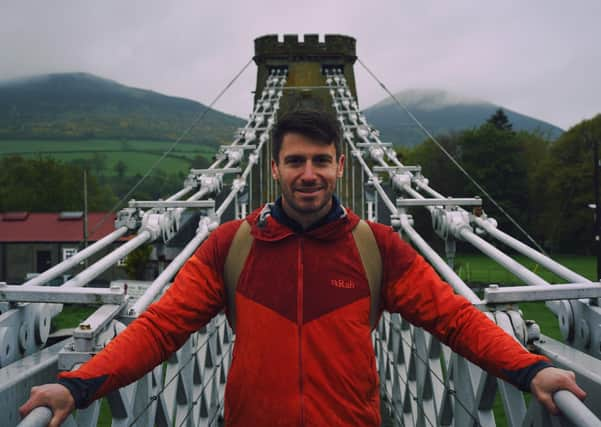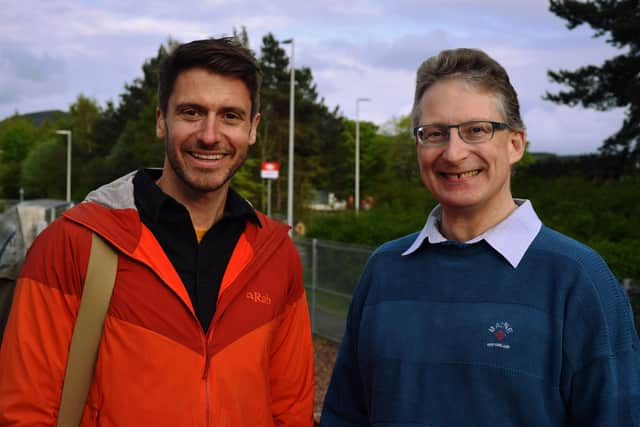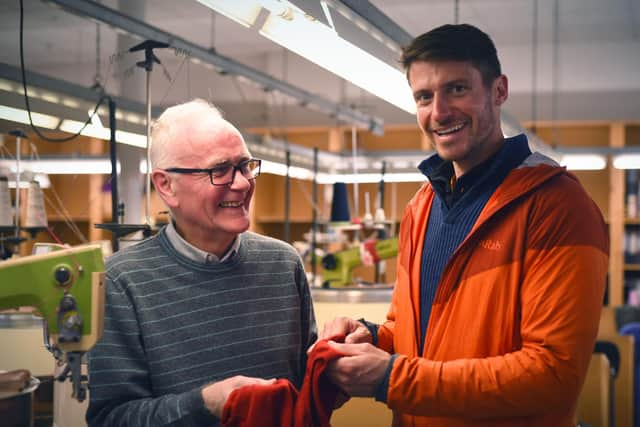TV show about old rail route through Borders running late but now about to arrive


Presenter Rob Bell visited the region last May to shoot scenes for his Channel 5 documentary series Walking Britain’s Lost Railways.
He met up with Simon Walton, chairman of the Campaign for Borders Rail, and visited locations including Stobs Camp and one of Hawick’s textile factories.
Advertisement
Hide AdAdvertisement
Hide AdThe six-part series started being broadcast late last year, but after the first two episodes it was halted, apparently due to scheduling issues.


The series eventually resumed this spring, and next week, on Friday, April 24, at 8pm, the final episode, about the old Waverley Route from Edinburgh to Carlisle through the Borders, will be screened.
The first stage of Rob’s journey was aboard the new Borders Railway, the longest train line to open in over a century upon its launch, after years of campaigning, in September 2015.
The show follows a walk along a length of the old 98-mile route closed in 1969 as part of former British Rail chairman Richard Beeching’s cutbacks, taking in the 23-arch Newbattle viaduct.
Advertisement
Hide AdAdvertisement
Hide AdMr Walton said he filmed with the presenter for a good part of a day at Tweedbank station last May but doesn’t know how much of their conversation will make it into the finished hour-long documentary.


He said: “There was a scheduling issue with Channel 5. I don’t know the details, but they broadcast the first couple of episodes of the series and then unceremoniously put it on hold, but the series has resumed and the sixth and final episode will be the Waverley Route episode which I took part in.
“We met up at Tweedbank and Rob asked me a little bit about the history of the line and the success of the Borders Railway and the campaign’s part in seeing the line extended, and I sent him on his way with a couple of recommendations and people to meet.
“His opening question, I don’t know if this will survive the final cut, related to why Tweedbank was the terminus and I emphasised that it was a temporary terminus and that it serves a modern purpose in that it is a park-and-ride facility and that it complements Galashiels, which is a public transport hub.
Advertisement
Hide AdAdvertisement
Hide Ad“I said that it had to be considered as phase one and that the rest of the line to Carlisle is phase two, and I said it would not be a lost railway for long.”
Calls for an extension of the Borders Railway into England continue to gather momentum now the number of passengers using its stations annually has passed the two-million mark for the first time.
According to statistics issued by the Office of Rail and Road, station usage along the Edinburgh-Tweed bank track in the last financial year was 2,026,186, up from 1,961,528 passenger movements the year before.
Those figures are estimates of the number of entries, exits and interchanges at each station in the Borders, garnered using information from ticket sales and other data.